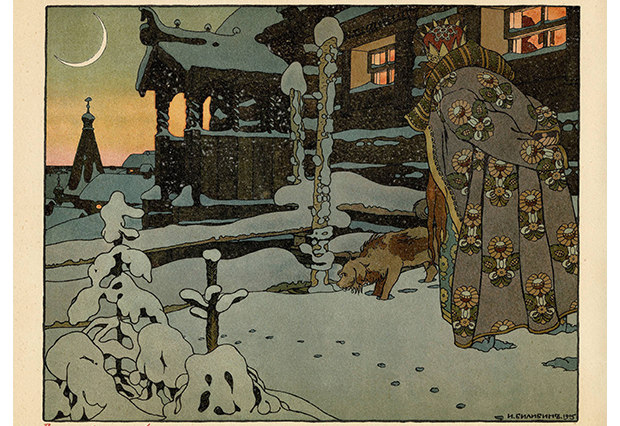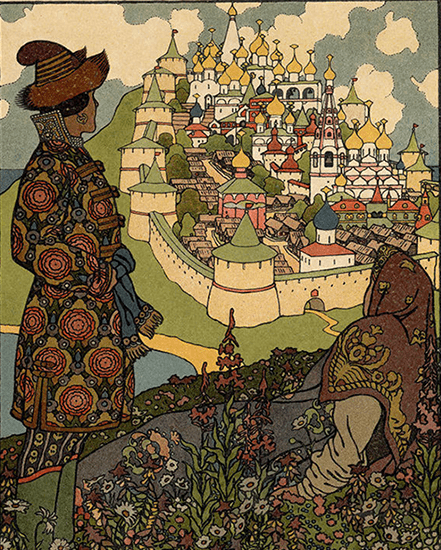Verified: 6 months ago
SafeTensor
The FLUX.1 [dev] Model is licensed by Black Forest Labs. Inc. under the FLUX.1 [dev] Non-Commercial License. Copyright Black Forest Labs. Inc.
IN NO EVENT SHALL BLACK FOREST LABS, INC. BE LIABLE FOR ANY CLAIM, DAMAGES OR OTHER LIABILITY, WHETHER IN AN ACTION OF CONTRACT, TORT OR OTHERWISE, ARISING FROM, OUT OF OR IN CONNECTION WITH USE OF THIS MODEL.
Trained on 20 lithographies by the Russian illustrator and stage designer Ivan Yakovlevich Bilibin (16 August [O.S. 4 August] 1876 – 7 February 1942). To see his works, please go to
steemit.com/art/@awispa/meeting-the-painter-ivan-bilibin-portraying-the-russian-fairytales
content.lib.washington.edu/exhibits/russian-childrens-lit/4-bilibin.html
digitalcollections.lib.washington.edu/digital/collection/childrens/id/2468/rec/1
digitalcollections.lib.washington.edu/digital/collection/childrens/id/2615/rec/2
Initially, I was not too taken with his slightly quaint style, so I put it on the back burner. But after the LoRA is done, I am glad I did it, because it does produce unique and charming images. So I hope you'll have fun with it! 🎈😎
Two version are provided. In version 1.0 I've removed all the ornamental frames around his original images. I figured it is easier to add the frame back in than to have them appear all the time. But when I trained version 1.1, I found that the ornamental frame will actually only appear if you prompt for it.
P.S. I find his style very similar to the look of the animated movie The Last Unicorn (1982), and I would not be surprised if his style has a major influence on the movie.
From ChatGPT:
Ivan Yakovlevich Bilibin (16 August [O.S. 4 August] 1876 – 7 February 1942). was a Russian illustrator, stage designer, and artist renowned for his evocative depictions of Slavic folklore, fairy tales, and mythology. His highly decorative and detailed work combined elements of traditional Russian folk art, Art Nouveau, and Symbolism, creating a distinctive style that has left a lasting impact on illustration and visual storytelling.
1. Early Life & Education
Born in Tarkhovka, near St. Petersburg, Russia, in 1876.
Studied at the St. Petersburg Academy of Arts, where he was strongly influenced by the Mir Iskusstva (World of Art) movement, a group promoting Russian folk culture, art, and craft.
Traveled to the Russian countryside, especially the northern provinces, to document traditional wooden architecture, costumes, and decorative arts, all of which heavily informed his work.
2. Style & Artistic Approach
🎨 Russian Folk Influence – Bilibin’s illustrations are rooted in traditional Russian folk tales, legends, and decorative motifs, such as:
Ornate borders inspired by illuminated manuscripts.
Geometric patterns reminiscent of Russian embroidery and folk textiles.
Stylized trees, skies, and landscapes, giving his scenes a mythic, timeless feel.
🎨 Art Nouveau Influence – His work, while rooted in Russian tradition, also draws from the flowing lines and organic forms of Art Nouveau, blending European modernism with Russian folk imagery.
🎨 Narrative Mastery – Bilibin’s illustrations don't just decorate—they tell stories through intricate detail, expressive characters, and carefully composed scenes that capture the spirit of Russian folklore.
3. Key Themes in His Work
✅ Russian Fairy Tales & Legends – He illustrated many classic tales, including:
The Tale of Tsar Saltan
 The Tale of Tsar Saltan (Skazka o Tsare Saltane, 1905), p. 4
The Tale of Tsar Saltan (Skazka o Tsare Saltane, 1905), p. 4
The Firebird
✅ The Forest as a Living World – Russian forests in Bilibin’s work are not just backgrounds; they are enchanted, living spaces, where magical events unfold.
✅ Heroism & Magic – His work captures epic quests, magical creatures, brave princes, and cunning witches, all framed by his signature decorative borders and intricate pattern work.
4. Book Illustration
📚 Bilibin’s reputation was built on his work illustrating Russian fairy tales, starting in the early 1900s.
His 1899 illustrations for “The Tale of Ivan Tsarevich, the Firebird, and the Grey Wolf” first brought him wide attention.
His illustrated volumes were prized not just for the art, but also for their meticulous integration of image, text, and ornament—each book a complete aesthetic experience.
5. Beyond Illustration – Theater & Design
🎭 Bilibin also worked extensively in theater design, particularly for opera and ballet.
Created sets and costumes for productions of Russian operas like Nikolai Rimsky-Korsakov’s The Golden Cockerel.
His stage designs reflected his love of historical Russian architecture and traditional folk motifs.
6. Historical Context & Exile
After the Russian Revolution of 1917, Bilibin fled Russia and spent years living in Egypt, France, and other parts of Europe, working on book illustration and theater design for Russian émigré communities.
Despite living abroad, his work remained deeply rooted in Russian tradition, and he always longed to return to his homeland.
In 1936, he returned to the Soviet Union, working on book design and theater projects until his death.
7. Death and Legacy
Died in 1942 during the Siege of Leningrad, likely due to starvation.
His legacy lives on in:
The revival of Russian folk art traditions.
The influence his bold, decorative storytelling style has had on later illustrators, especially in fantasy and fairy tale art.
His visual interpretations of Russian folklore, which remain iconic and widely reprinted.
8. Why He Matters
🌟 Bilibin redefined how Russian folklore was visualized—his imagery is still the gold standard for how people imagine the world of Baba Yaga, Ivan Tsarevich, and the Firebird.
🌟 He bridged the gap between fine art, book illustration, and theater, blending craftsmanship and storytelling.
🌟 His fusion of folk tradition, narrative clarity, and modern design has influenced everything from storybook illustration to fantasy worldbuilding.
9. Visual Hallmarks
🖼️ Look for:
Intricate, hand-drawn borders framing scenes.
Highly stylized trees, water, and clouds, often arranged in rhythmic patterns.
Figures in traditional Russian clothing, rendered with meticulous detail.
A sense of depth and space, combining flat decorative elements with narrative action.
Rich, jewel-like colors, especially in his original works.
In Summary
Ivan Bilibin was more than just an illustrator—he was a cultural ambassador, preserving and reimagining Russian folklore and traditional art for modern audiences. His fusion of folk tradition, modern design, and storytelling flair continues to inspire illustrators, animators, and fantasy artists worldwide.








